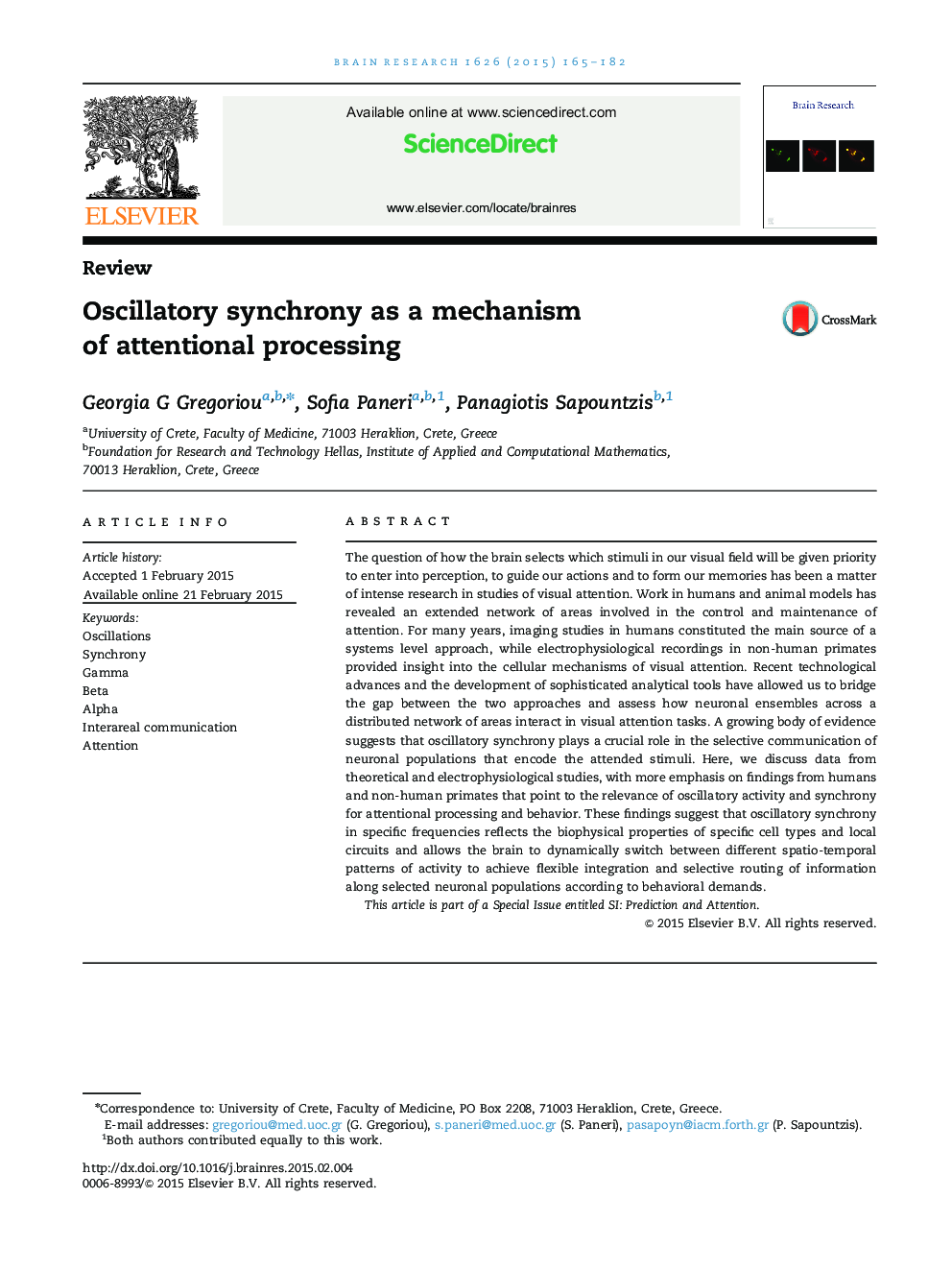| کد مقاله | کد نشریه | سال انتشار | مقاله انگلیسی | نسخه تمام متن |
|---|---|---|---|---|
| 6262808 | 1613813 | 2015 | 18 صفحه PDF | دانلود رایگان |
- Reviews studies that have established a role of oscillatory synchrony in attention.
- Discusses the role of neural synchrony in information processing.
- Reviews evidence on attention induced modulations of local and long-range synchrony.
- Summarizes the cellular mechanisms of synchrony.
- Discusses correlations between oscillatory synchrony and behavioral measures in attention.
The question of how the brain selects which stimuli in our visual field will be given priority to enter into perception, to guide our actions and to form our memories has been a matter of intense research in studies of visual attention. Work in humans and animal models has revealed an extended network of areas involved in the control and maintenance of attention. For many years, imaging studies in humans constituted the main source of a systems level approach, while electrophysiological recordings in non-human primates provided insight into the cellular mechanisms of visual attention. Recent technological advances and the development of sophisticated analytical tools have allowed us to bridge the gap between the two approaches and assess how neuronal ensembles across a distributed network of areas interact in visual attention tasks. A growing body of evidence suggests that oscillatory synchrony plays a crucial role in the selective communication of neuronal populations that encode the attended stimuli. Here, we discuss data from theoretical and electrophysiological studies, with more emphasis on findings from humans and non-human primates that point to the relevance of oscillatory activity and synchrony for attentional processing and behavior. These findings suggest that oscillatory synchrony in specific frequencies reflects the biophysical properties of specific cell types and local circuits and allows the brain to dynamically switch between different spatio-temporal patterns of activity to achieve flexible integration and selective routing of information along selected neuronal populations according to behavioral demands.This article is part of a Special Issue entitled SI: Prediction and Attention.
Journal: Brain Research - Volume 1626, 11 November 2015, Pages 165-182
